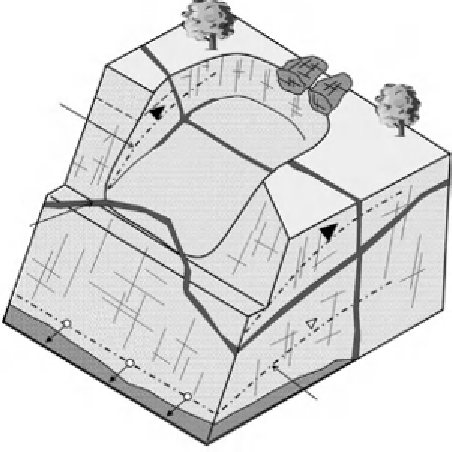Geology Reference
In-Depth Information
Temporary
perched water
above dyke
necessary to
explain failure
IV/V
Granite
Shallow dipping
dyke underlying
failure
'Permanent' water
table above rock
head
to explain failure.
3.
Water in
ltrated as a wetting band, until it reached the shallow dipping dyke underlying the main
landslide scar, leading to increased water pressure.
4.
Figure B3-5.5
shows a cross section through the failure with three postulated piezometric
surfaces, and
Figure B3-5.6
shows the results from numerical analysis; the main curves show
solutions for Factor of Safety = 1.0 for different strength conditions and for each trial piezometric
surface individually. Although a range of strengths were measured for the decomposed granite, the
most likely strength was
= 5 kPa. If that was correct, then the failure would have
been triggered by a piezometric pressure somewhere between surfaces 2 and 3.
φ
′
= 36 degrees, c
′
105
Grade III
rock
3
100
2
1
95
Grade IV & V granite
90
Decomposed dolerite dykes
85
explain the likely conditions when the landslide occurred.




